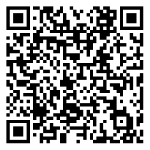Casting and pouring is one of the common processes in steel smelting, and the temperature of molten iron directly affects the quality of steel products and production costs. Infrared thermal imaging can monitor the temperature of molten iron in real-time and accurately, which is of great significance for improving production efficiency, optimizing production
processes, and saving energy.
Pain points of traditional temperature measurement methods
Compared with infrared thermal imaging, traditional contact temperature measurement methods such as thermocouples and thermal resistors have many drawbacks:
During the measurement process, the characteristics and heat transfer methods of the measured object will have an impact on the measurement results. Due to the time required for heat transfer, temperature sensing components need to wait for thermal equilibrium with the measured target in order to accurately measure temperature, which may result in insufficient dynamic response capability.
2. Directly inserting the contact type temperature measuring element into the measured target will affect the temperature field of the target, resulting in inaccurate measurement.
3. Temperature sensing components are easily affected by the measurement environment, especially in high temperature or corrosive media, which can shorten the service life of temperature sensing components, reduce measurement accuracy, and may even be unable to perform measurements




